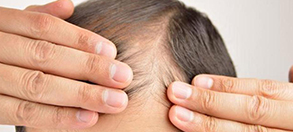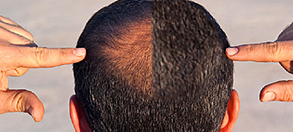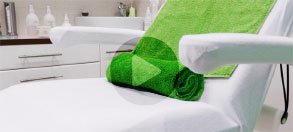Head lice are a type of louse, or blood-sucking insect. These six-legged creatures glue their eggs (nits) on strands of the hair close to the warmth of the scalp and survive by feeding off of scalp blood. They are transmitted from direct head-to-head contact, as they are only capable of crawling from one head to another. Indirect transfer is also a possibility, but it doesn’t happen as reliably as direct contact. Indirect transfer of head lice can occur when people share a brush or comb, a hat, or pillows, or even from resting one’s head on the same upholstery as someone who currently has a head lice infestation. Children tend to be at the greatest risk of getting head lice, as they play closely and head-to-head contact occurs often. This does not mean, however, that adults are not at risk, as anyone can get them. The adult louse is 1/8 inch in size, or roughly the size of a sesame or strawberry seed, and may be gray or tan. The louse egg is yellow, tan, or brown and may be difficult to see until the egg hatches. At this point, the louse egg often appears to be white or clear. The most common and annoying symptom of head lice is itching. Itching is caused by an allergic reaction to the saliva that is released by head lice as they feed. It typically occurs on the scalp but can also occur on one’s neck and ears. Itching is also problematic, as severe itching can lead to breaking the skin of the scalp, leaving it open to infection. Another sign of infestation is small red bumps, or even visible lice, on the scalp or neck or around the ears. Seeing a nit does not verify active infestation, however, unless the nit is close to the scalp. Nits further up the hair strand have likely hatched, as they cannot survive without the heat from the scalp.
Treatment
When head lice are discovered, there are two treatment options available: medication or at-home remedies (No at home or non-prescription approach has strong proof of efficacy but will be reviewed here). People often choose at-home remedies as a preliminary step in the treatment of head lice or if they prefer to avoid medications altogether. If at-home remedies fail to resolve the lice problem or if people choose to skip self-treatment, medication is necessary to remove head lice successfully. At-home treatments include the use of essential oils such as tea tree oil on the hair and scalp. The application of certain types of products found in the home may also help. Items such as olive oil, coconut oil, and mayonnaise, for example, may be used to smother both the lice and their eggs. Petroleum jelly is a non-food item that may also be effective when it comes to smothering lice and nits. To perform this type of treatment, simply smooth the product throughout the hair, cover with a shower cap, and leave the product on overnight. Ultimately, any non-prescription approach will require complete physical removal of the lice and eggs.
Medicated treatment includes either prescription or over-the-counter (OTC) products. OTC medications are applied to clean and dry hair and contain a chemical that is poisonous to lice. This chemical is called pyrethrin or permethrin. When using OTC remedies, it is important to follow the directions closely and repeat as instructed for maximum success. If OTC medication fails, then prescription medication will be necessary. Increasingly, OTC failure is due to lice resistance to pyrethrin and permethrin as opposed to user failure. Malathion, ivermectin lotion, and benzyl alcohol lotion are examples of prescription medications for lice. Most of these prescriptions are not approved for use on children who are under the age of six, and some may not be safe for pregnant or nursing women. A special comb may also be used to manually remove lice and nits, and it is particularly helpful when it comes to removing lice and nits from the hair of younger children on whom medication cannot safely be used. A lice comb may be used following other treatment methods to remove any nits that remain post-treatment, or it may be used on its own. When used on its own, a lice comb is more time-consuming than other methods and may not be as thorough.
Prevention
If a child or anyone in the family has head lice, there are precautionary steps that can be taken to prevent its spread. Cleaning of items that may have come into contact with infested hair is one of the ways to do this. Clean all brushes, combs, hair picks, etc., with very hot and soapy water, allowing them to soak for ten minutes. Wash bed linens and any other machine-washable items, such as towels, in hot water that is no less than 130 degrees Fahrenheit and dry them in a clothes dryer at high heat. Non-washable items that may have come in contact with infested hair should be sealed in a plastic bag for no less than two weeks. Stuffed animals that children regularly sleep or cuddle with may be placed in the clothes dryer for 20 to 30 minutes on the highest heat setting. Upholstery and carpets should also be vacuumed to remove any lice. Everyone living in the house, particularly anyone who shares bedding or clothing with the person who has the head lice infestation, should be checked and treated if necessary. Everyone needing treatment should have it done on the same day to prevent re-infestation.
There are also simple steps that people can take to prevent head lice infestation in the first place. Children and adults should never wear hats, scarves, hair ribbons, or even headphones that belong to other people. Sharing of combs and hair brushes should also be avoided. This is something that parents must impress upon their school-aged children, as their risk of infestation is highest. In addition, children should be taught to avoid head-to-head contact when playing if possible. It is also helpful to avoid hanging coats or hats on commonly shared hooks or in lockers that are shared by several people, as a wearer of these items may have head lice.
Parents will want to check their children weekly for signs of active infestation. Detection is easiest when done on wet hair and will require the use of a lice comb and a bright light. To perform the search, wet the hair and apply hair conditioner to make the hair easier to comb. Divide the hair into small sections for better control and access, then begin combing through each section starting at the scalp. Look closely for nits attached close to the scalp and movement on the scalp, as lice will move quickly when disturbed. Check the teeth of the comb for lice or lice eggs after each pass of the comb.
- Head Lice: Diagnosis, Treatment, and Outcome
- KidsHealth for Parents: Head Lice
- What Parents Should Know About Head Lice
- Head Lice FAQs
- Management of Head Lice
- Controlling Head Lice
- Head Lice Fact Sheet
- Head Lice Management
- Head Lice
- University of Minnesota Head Lice
- Head Lice Treatment and Prevention
- Mayo Clinic: Head Lice Treatment and Drugs


